I recently wrote a post encouraging people to participate in shaping Kelowna’s revised Agriculture Plan. In that post I asserted that agriculture within the boundaries of the city of Kelowna contributes little to food security. A number of people took issue with this. Therefore, I thought I should look a little deeper into what is meant by food security.
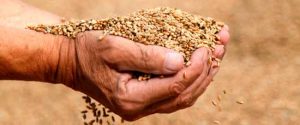 It is pretty obvious that food security is a term that can get some people pretty excited, particularly when they see it as under threat. However, when I listen to what people are saying, I’m left with the impression that people have a range of different definitions for the term ‘food security’. As a result, we may be talking past each other, rather than with each other, which really doesn’t do much for building consensus. So, I’m going to do what academics do well, which is pick one clear definition and work through the relationship of that definition to the role of agriculture in Kelowna.
It is pretty obvious that food security is a term that can get some people pretty excited, particularly when they see it as under threat. However, when I listen to what people are saying, I’m left with the impression that people have a range of different definitions for the term ‘food security’. As a result, we may be talking past each other, rather than with each other, which really doesn’t do much for building consensus. So, I’m going to do what academics do well, which is pick one clear definition and work through the relationship of that definition to the role of agriculture in Kelowna.
Before I get to this though, remember that Kelowna is updating its agricultural plan. There is a web page: Agricultural Plan. From that web page you can complete an online survey. The times, dates, and locations for two in person public consultation are also there. If you want to have a say, here are the opportunities.
What is food security?
The 1996 World Food Summit stated:
Food security exists when all people, at all times, have physical and economic access to sufficient safe and nutritious food that meets their dietary needs and food preferences for an active and healthy life.
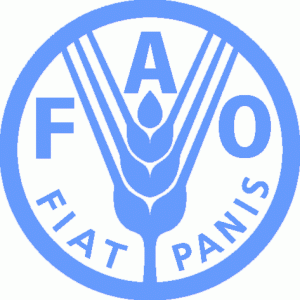 Within this definition, people have come to recognize four ‘pillars’: availability, access, utilization and stability. The definition does not mention local food production. If local food production is central to your definition of food security, then you won’t like this definition. If I am good with this definition and you are not, until we straighten out a common language, it will be very hard for us to get anywhere. Perhaps the way forward is to let go of the term ‘food security’, and focus on the identified pillars directly. The question then is whether or not local food production, particularly within the boundaries of the city of Kelowna, contributes to these pillars.
Within this definition, people have come to recognize four ‘pillars’: availability, access, utilization and stability. The definition does not mention local food production. If local food production is central to your definition of food security, then you won’t like this definition. If I am good with this definition and you are not, until we straighten out a common language, it will be very hard for us to get anywhere. Perhaps the way forward is to let go of the term ‘food security’, and focus on the identified pillars directly. The question then is whether or not local food production, particularly within the boundaries of the city of Kelowna, contributes to these pillars.
Availability. Are sufficient quantities and varieties of food available to the population we are concerned about? Would the loss of food production within the boundaries of the city of Kelowna affect how much food is available to the people of Kelowna? Well, that really depends on how the food system in Kelowna would respond to the loss of locally produced food. That system includes the retailers, wholesalers, transportation systems, and the producers around the world whose goods are sold in Kelowna. Within Kelowna we don’t produce any significant amount of wheat, beef, poultry, eggs, milk, fish or rice. We import these food items from other places, and export some of what we produce. The supply chains are so well developed that availability would not be much affected if food production within the boundaries of the city of Kelowna stopped.
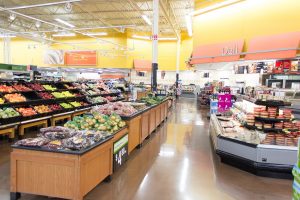 Access. Some people talk about ‘food deserts’ (e.g. http://www.ehatlas.ca/built-environments/food-deserts), by which they usually refer to urban areas that don’t have easy access to grocery stores. Grocery stores typically locate where there is easy access for their customers. Often this is not in poor neighbourhoods, forcing those residents without the means or ability to travel to rely on local corner stores and/or fast food outlets. They end up paying more for less healthful food.
Access. Some people talk about ‘food deserts’ (e.g. http://www.ehatlas.ca/built-environments/food-deserts), by which they usually refer to urban areas that don’t have easy access to grocery stores. Grocery stores typically locate where there is easy access for their customers. Often this is not in poor neighbourhoods, forcing those residents without the means or ability to travel to rely on local corner stores and/or fast food outlets. They end up paying more for less healthful food.
How does local food production affect access? The BC Tree Fruits outlet in Kelowna may provide a local food option in an area where there are few others. The Kelowna Farmer’s market, located approximately midway between Real Canadian Superstore and Save On Foods, doesn’t provide relief for any of Kelowna’s food deserts. Local food production can make a difference if it directly targets the food deserts, as was done in Tacoma, Washington (see the Washington Post). They made this work for farmers and for the urban poor through vouchers that doubled the value of the food stamps. Local donors funded the program, which meant that the urban poor could afford to buy at the farmers market and the producers could still earn money by locating a market in a poor part of Tacoma. Local food production can help with this aspect of food security, but it isn’t automatic. Just protecting the ability to produce food locally doesn’t mean we are helping those in our community who struggle to afford a healthy diet.
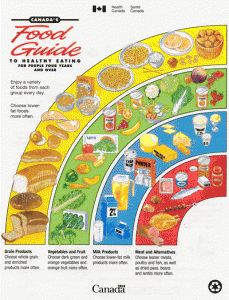 Utilization. This is about how the food supply translates into the nutritional status of the person. Are people able to make wise choices in the preparation of what they eat and what they choose to eat, so that they are healthy. On its own, local food production has no connection to utilization. However, if local food producers help educate people who are not making the best choices for their health, then it can make a difference. Do efforts to enable the needy in our community to make healthful choices depend on food being produced in our community. They don’t. However, locally produced food can address utilization issues if it is linked to helping people make healthful choices.
Utilization. This is about how the food supply translates into the nutritional status of the person. Are people able to make wise choices in the preparation of what they eat and what they choose to eat, so that they are healthy. On its own, local food production has no connection to utilization. However, if local food producers help educate people who are not making the best choices for their health, then it can make a difference. Do efforts to enable the needy in our community to make healthful choices depend on food being produced in our community. They don’t. However, locally produced food can address utilization issues if it is linked to helping people make healthful choices.
Stability. Does producing food within the city of Kelowna contribute to our ability to limit the fluctuations in availability that can result from political or environmental effects on other parts of our food system? The land in Kelowna has other uses, evidenced by the high prices relative to the value of the food it can grow. Protecting land for agriculture within Kelowna therefore means foregoing other, more profitable uses for the land. Foregoing the higher profit is akin to paying insurance. By protecting land we are protecting the resource we need to grow food, even if we don’t need the extra food now. By supporting farmers, we are protecting and sustaining the knowledge and skills of those who are able to grow food locally, even if we presently have plenty of alternatives. Protecting farmers and farmland protects our capacity to produce food, should there be some event that makes it necessary to produce food locally. In this way, protecting local food production does contribute to food security. However, this insurance isn’t free. How much should we pay?
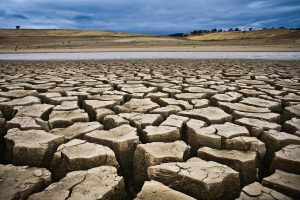 One way to think about how much we should pay is to think about the risks of our imported food supplies being interrupted or becoming suddenly much more expensive. There are lots of risks that people point out. Some fear that our global food system, which is perceived to rely on extensive monocultures, is vulnerable to pest and/or disease outbreaks that can rapidly devastate the global food supply. Some say we need to be ready in case of international conflict that interrupts supply chains. Some suggest that our modern trade treaties could collapse and trade wars ensue, making it much more difficult to import food from other countries. Some contend that our industrial food system is essentially mining the land, and that at some point it will collapse, and we need local, small scale, ecological agriculture to feed ourselves when this happens. Some argue that climate change will make some parts of the world unsuitable for growing food, and we need to protect all the productive areas we have now, to make up for this coming loss. These are some of the arguments I have heard, and I expect there are even more.
One way to think about how much we should pay is to think about the risks of our imported food supplies being interrupted or becoming suddenly much more expensive. There are lots of risks that people point out. Some fear that our global food system, which is perceived to rely on extensive monocultures, is vulnerable to pest and/or disease outbreaks that can rapidly devastate the global food supply. Some say we need to be ready in case of international conflict that interrupts supply chains. Some suggest that our modern trade treaties could collapse and trade wars ensue, making it much more difficult to import food from other countries. Some contend that our industrial food system is essentially mining the land, and that at some point it will collapse, and we need local, small scale, ecological agriculture to feed ourselves when this happens. Some argue that climate change will make some parts of the world unsuitable for growing food, and we need to protect all the productive areas we have now, to make up for this coming loss. These are some of the arguments I have heard, and I expect there are even more.
I have also heard people arguing that there is nothing to worry about. Some point out the incredible promise of genetic engineering to usher in a second ‘green revolution’. Perhaps we will develop drought tolerant nitrogen fixing perennial wheat crops with a complete set of amino acids. Some suggest that there isn’t a clear distinction between industrial and organic/ecological agriculture. Conventional farmers adopt new techniques and technologies, some of which are borrowed from organic producers, when those are beneficial. The development of no-till methods, which rely on herbicides and innovative machinery, has substantially reduced soil erosion and improved soil structure. Others point out that if we applied current best practices and reduced waste, we could feed double the world’s population. They contend there is no food production problem. From this perspective, food security issues are food distribution issues. Therefore, policies that make it difficult to import food – trade barriers, health and environmental standards that are not coordinated across borders, requiring duplication of testing that has been done elsewhere, etc. – hurt those that struggle the most to afford a healthy diet by making that diet more expensive.

How much should we pay to protect our ability to produce food locally? Any ‘should’ question depends on values, and can’t be answered by facts alone. We often try to use facts to justify a particular favored answer to the question. However, there are often plenty of facts to support each possible solution, and plenty of missing facts that mean no case wins. Hence, it is possible for people who are well informed to hold different opinions about the world’s continued ability to feed itself. For some, we must hang on to every last scrap of potentially productive farmland, as they see serious risks to our ability to produce food. For others, there is plenty of scope for increasing food production, which means there is nothing to worry about. To me, arguments about the food security contribution of local agriculture are simply not conclusive, and as such I look for things that are definite, such as the multifunctionality of agriculture and the role that local food production can play in building and strengthening connections within our community.
Local food production can contribute to reducing food insecurity on more than one dimension. If you view the threats to food security as coming from outside our area, then local food production is insurance against these risks. This insurance does have a cost, and much of this cost locally is borne by land owners (many of whom are farmers), who cannot develop their land. Local food production does not necessarily deal with the access, availability or utilization aspects of food security. It can, but we would need additional policies beyond just protecting farmland from development to address these things.
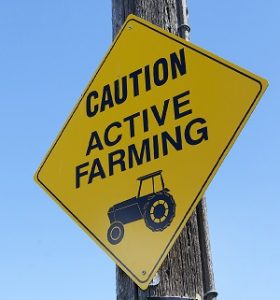 Should Kelowna’s revised agricultural plan speak to local food production as a means of addressing food security challenges in our community? Should we as a community be developing policy that takes the potential for local food production to address community food security issues and makes it a reality? The plan is being revised, and there are opportunities to contribute. If you care about these issues, you can visit the website, complete the survey, and/or attend a public event where input is sought.
Should Kelowna’s revised agricultural plan speak to local food production as a means of addressing food security challenges in our community? Should we as a community be developing policy that takes the potential for local food production to address community food security issues and makes it a reality? The plan is being revised, and there are opportunities to contribute. If you care about these issues, you can visit the website, complete the survey, and/or attend a public event where input is sought.

 Follow
Follow
1
Dear Professor:
Nice blog, with a full discussion of the topics you choose to cover and well thought out pictures that add interest to the text. My comments refer to the Apr.22, Kelowna Agricultural Plan: Be Heard and the Jun. 1 Food Security blog posts.
The two “facts” asserting that local food has no significant economic impact and that the environmental impacts are of little value ; need some countering. Current research can help set a better context as outsiders peering into the agri-food silo from their own silo often fail to see the details on the ground.
Even money losing industrial apple farmers in Kelowna make a significant contribution to jobs and income and spending within the City. The strange thing about agri-food ( you cannot look at agriculture in isolation from the other sectors of the Canadian economy that are directly influenced by food ); is that farmers can lose money but everyone else in the supply chain can profit.
The BC government has an ongoing data series that outlines the economic value and jobs associated with different parts of the BC agri-food supply chain. The numbers are quite astounding but very accurate. Every year in BC, $6 Billion in primary food ($4Billion IMPORTED) creates another $32 Billion in Processing-Warehousing-Transport-Retail economic activity. The 26,000 farm jobs on 19,000 BC farms supports another 260,000 full time jobs in the BC economy ( mainly restaurant and supermarket jobs ). The 210 apple farms in Kelonwa (2011 census) plus a few hundred other types of farms, provide thousands of jobs and tens of millions in payroll; just within Kelowna every year (2014 ? Agricultural profile of Kelowna). That is hardly insignificant.
It is true that industrial food producers in Kelowna using harsh chemicals, do not provide many environmental benefits. Their farming practices kill the soil life and destroy biodiversity. It is not true to say organic local farmers have no positive effect on the local environment.
There is a lot of evidence from research in the USA and Canada which shows how the sustainable farming practices recommended in the Canadian Organic Standards (COS, 2015 update), have a beneficial effect on the soil microbial biomass and soil biodiversity.
2
Dear Professor:
Just to review the facts supported by research studies; local food is a tremendous benefit to the local economy and organic local food also provides powerful benefits to the local environment.
You did a thorough assessment of the ability of local food to meet the four food security criterion of Availability Access Utilization Stability. Right now local food cannot feed the people of Kelowna. But, transforming under-used small parcels of ALR land into bio-intensive urban farms, could meet all the organic local vegetable and fruit needs of everyone in the City who buys organic food strongly. Let me explain what I mean shortly.
First, these four pillars of food security only address the consumer or demand side of agri-food. To be useful and operational, food security should also include how much land is required to provide all the calories a person needs to stay healthy. The definition of food security needs to have the farmer (supply) side considered, as well.
Canadians are getting fatter and fatter at a younger age. Nobody eats the minimum 5-a-day vegetable and fruit servings (2013 Vital Sign report for Kelowna said 60.4 % Do Not). So, that is part of why my criterion for food security is enough irrigated acres so each person who is a strong organic consumer in Kelowna, has 6-a-day organic local Vegetables (4) and Fruit(2). This helps resolve the worrying obesity trend by making more organic local vegetables available, as this seems to increase consumption. Farmers sell more vegetables at good prices – consumers get the vegetables they want to maintain health – retailers have a secure Canadian supply priced in Canadian dollars. Win – Win – Win.
Availability has to mean more then just what is in the store trucked from thousand of miles away (in 3 days, with no deliveries; that food would be gone). The needs of organic local farmers should be important to consumers as they provide the supply that is the key to health maintenance. Studies show there is enough under-used land in Kelowna to supply all the households who spend $50. or more weekly on organic food (assume 6-a-day). Supply all Kelowna consumers who buy organic is my definition of organic food security. Keep up the blogging.
Robert Dixon; Okanagan Organic Services (OK.O.S)
Building Organic Food Security